One Mad night in May
Friday, May 31, 2019
At 9.30 p.m on a summer like night in late May, I took a
short walk down the lane leading from Cilgwyn Lodge and there was
still enough light to see the hedge parsley billowing out from the
verges, giving out its overpowering perfume into the mild
night air, and bluebells and stitchworts still going strong
-the real joy of Spring at its best

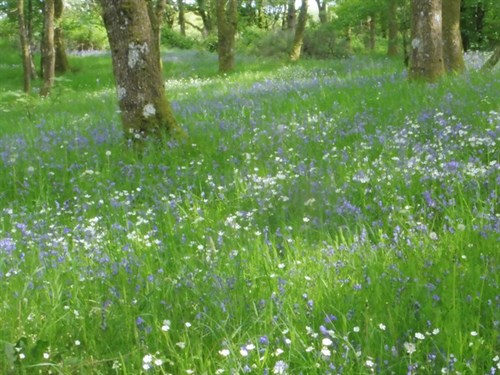
A very different scene than what greeted me in the garden
a few weeks earlier on the morning of 5 May when I was greeted by a
trail of devastation caused by a frost of -3C. Notwithstanding
being covered with horti fleece the leaves and flowers of many
shrubs and herbaceous plants were badly frosted and a different
perfume of rotting foliage filled the morning air. Even hedges
showed damage on newly emerged leaves of hardy native plants such
as beech, sycamore and hazel.
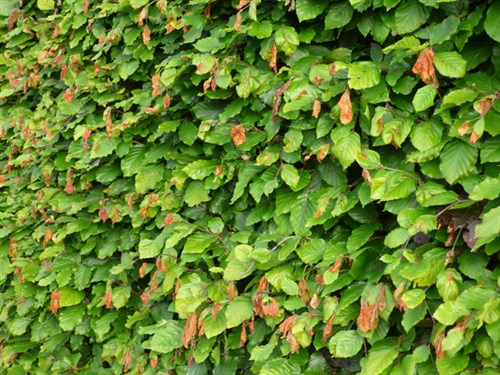
Hydrangeas were some of the worst affected in particular
the aspera forms
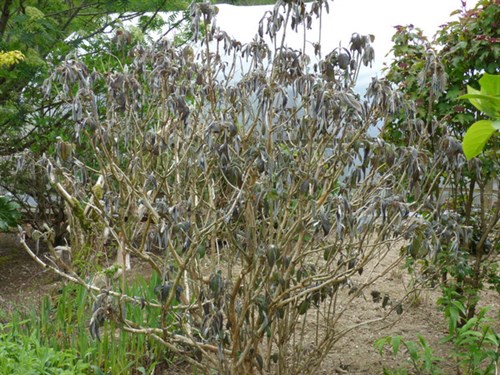
Hydrangea macrophylla

Acers too This is one of the many that look like
it is autumn
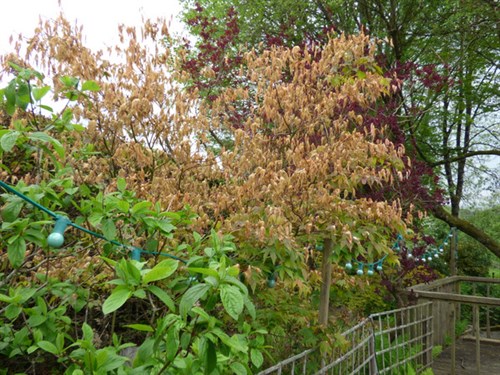
Herbaceous plants also suffered like this persicaria
"Purple Fantasy" which to bee honest was quite a blessing as it can
be quite a thug! A labour free way of doing the Chelsea Chop! Other
persicarias suffered in the same way, along with
rodersias.
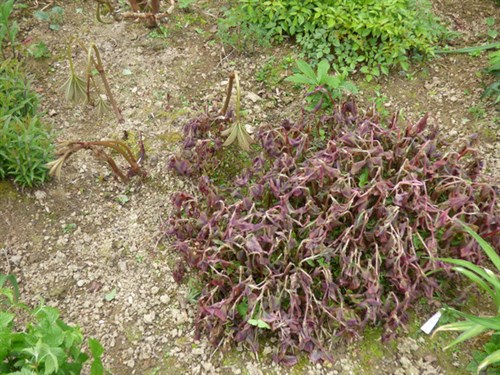
Leaves on some hostas were badly bleached, this is "Blue
Arrow"
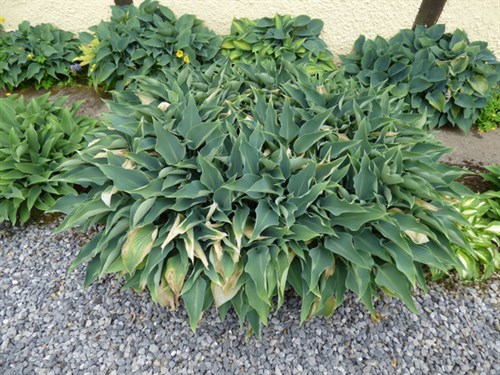
The Hosta bed by the Paddock Pond got away without
damage however.

Lilies took quite a hit
Lil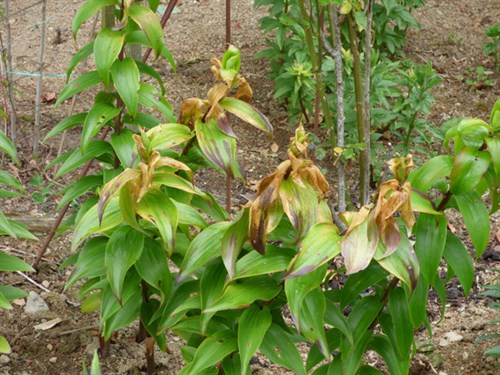
Native sycamore one of the components of this
hedge just up the lane
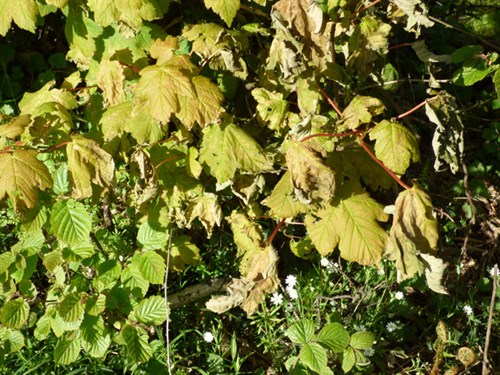
This is a 7 year old specimen I had grown from
seed

The canopy offered by the large beech tree offered
protection to Acer "Orange Dream"
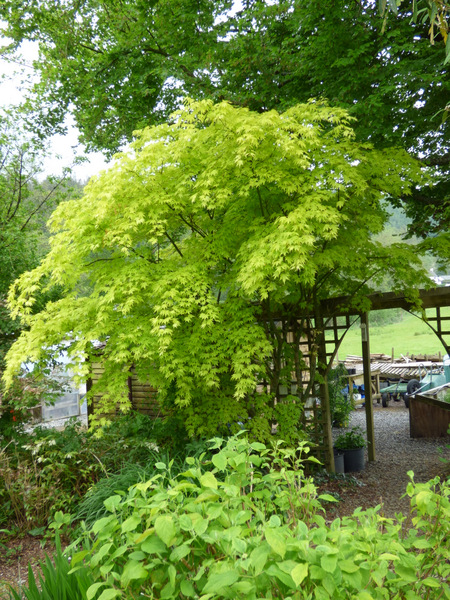

Ferns suffered too including adiantum
pedatum"Miss Sharples"
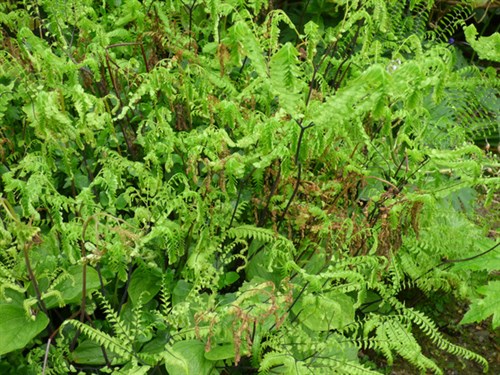
But the tougher shuttlecock fern matteucia
struthiopteris was unaffected, again being under the canopy of
overhanging shrubs and trees
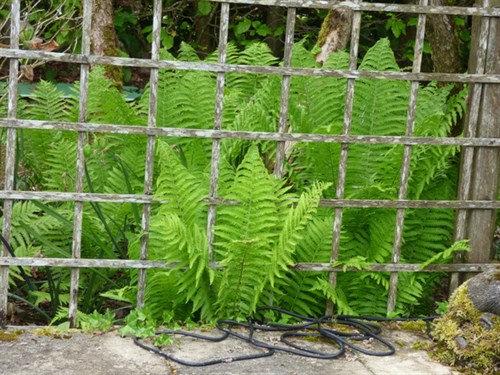
After looking so good in an otherwise gentle Spring it was
deeply upsetting and was a scene repeated in gardens of many of our
gardening friends across West Wales, some of whom had even lower
temperatures than we did, in a few cases down to -6C!!. Our
friends Bob and Annette who live right on the edge of
the Gower peninsular, a few days earlier had
suffered strong salt laden gales from a named storm which severely
damaged a wide range of plants even those at ground floor level
which appeared to have plenty of shelter, including all their
cyprepedium orchids that they have cherished for years and
had never flowered better.
Of course we gradually recover from the shock as do many of the
plants but it does take time. I am sorry to start this
month's news on such a low key note but there are good things to
report on especially flowers on herbaceous plants and shrubs
bursting into flower to lift the spirits. We have all been
gardening long enough to know that weather events like this do
happen from time to time, remembering on reflection trees we have
lost to gales, and sharp frosts occasionally in June
and August over the years when the whole garden was at its
peak and tender veg were spoiled for the rest of those years.
A brighter picture presented by euphorbia
palustris "Wallenburg's Glorie" one of the few in the genus that
happily grows in moist soil and shady conditions. It is accompanied
by Rodgersia "Iris Bronze" that had the luxury of horti fleece on
the night of the frost
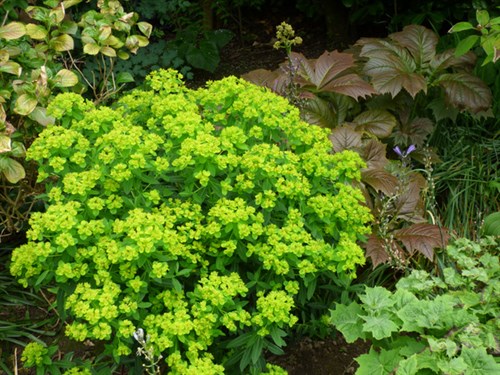
The woodland garden along the stream
bed
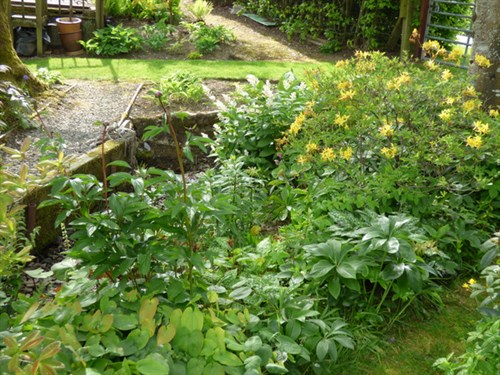
Maianthemum racemosum is a beautiful perennial in moist
and shady conditions such as this
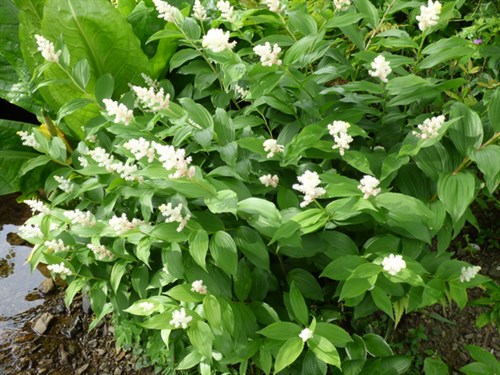
White flowers are prominent in many May flowering
perennials, trees and shrubs and viburnum opulus sterile can always
be relied on to put on a good showing of globular flowers whetever
the weather

Weather
In spite of what is said above this May has been a generally
fine month overall with precious little rain and many sunny often
warm days. Low rainfall levels have been a feature of the whole of
spring, requiring regular irrigation across the gardens
May weather stats 31 days:-
Sunny days = 21
Changeable = 6
Rain days= 4 The Llangadog average for May is 13 days
7 inches of rain recorded with one day of very heavy rain which
was very welcome. 2.5 inches is the annual May rainfall
here.
Very few windy days but the wind direction most of the
month was easterly which in May is good news for us.
Temperatures:
Max = 21C on 4 occasions with 20C on another 4
Min = -3C on 5th amd just one more frost of -1.8C on 12th
Blue skies and drought conditions were a regular
condition

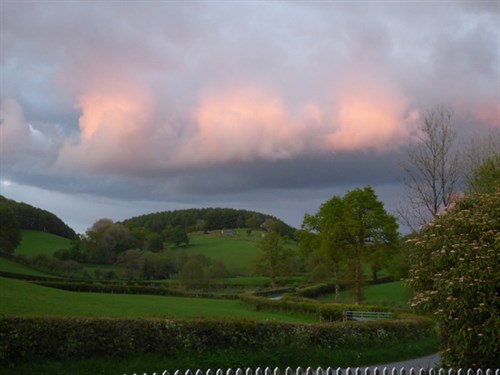
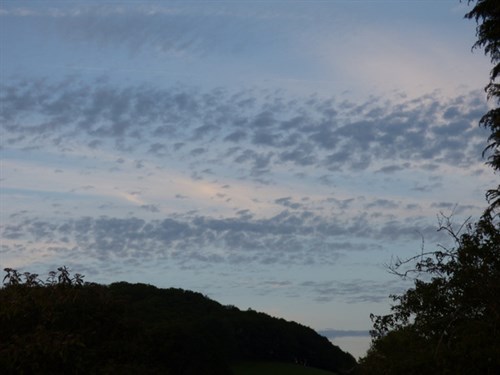
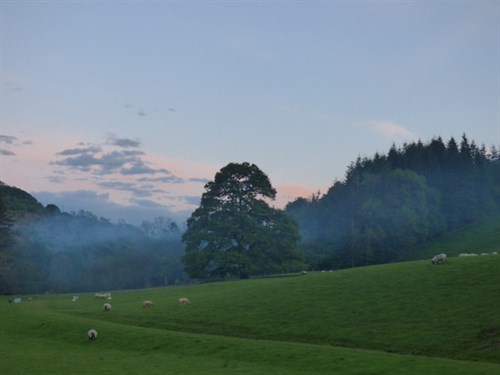
Showery cold weather was an unwanted visitor at
Malvern RHS Spring Festival
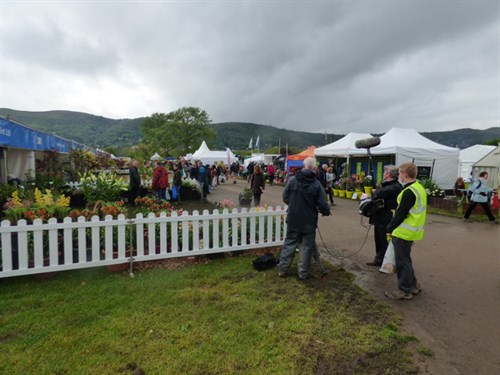
Garden update
Vegetable seeds of root crops sown in March are on the move and
transplanted brassicas have established well with first crops of
lettuce "Little Gem"and radish. Hispi cabbage is hearting up and
should be ready for cutting soon thanks to protection from horti
fleece.

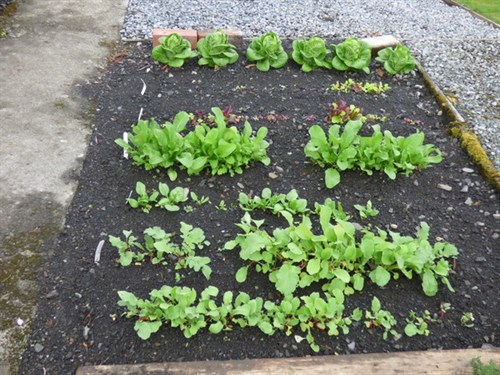
Direct sown quasi wild flower seed mixes have germinated well
but need regular watering. I have to try and remember where I have
made recent sowings and plantings to ensure they all get
watered!
In the nursery there are mature plants to transplant
wherever there are gaps all over the gardens. I am particuarly
pleased with primulas from our own seeds which are in a wider range
of colours than we had last year. We also have some fine plants of
deep red astrantia major rubra from seed.
In regard to pests and diseases there is a limited amount of
whitefly in the tunnels which we control with spraying. The use of
natural predators last summer turned out to be something of a
failure.
On lilies there are lily beetles, shiny red insects that regular
inspection can root out to crush them between finger nails. I have
not yet spotted their grubs, foul things covered in their own
excrement. Spraying may be necessary if they appear or there are
signs of damage to emerging flower buds which are
particularly prone, substantially reducing flowering. Lily beetles
are not as invasive here than they have been for some years further
east in the UK.
Rodents, mostly mice, shrews and voles have a taste for emerging
peas and sweetcorn, which can devastate a crop in a matter of
nights so we need to be vigilant for tell tale signs of uprooted
shoots minus the peas. Traps are protected from other wildlife by
upturned plant crates. Thrown into the nearby field the rodent
corpses are quickly pounced upon by observant red kites.
At last we can now remove all the overwintered tender
plants from the tunnels, including salvias, cannas, gingers,
abutilons, begonias and agapanthus to be placed in strategic
positions all over the garden. This will create the space to move
the already potted tomatoes to their permanent postions in the
tunnels.
Ponds need constant maintenance to keep on top of blanket weed
and associated green water
What's looking good?
All the plants that you would expect to be at their best in late
May, that the frost did not damage.
Bearded iris are the archetypal plant for
May
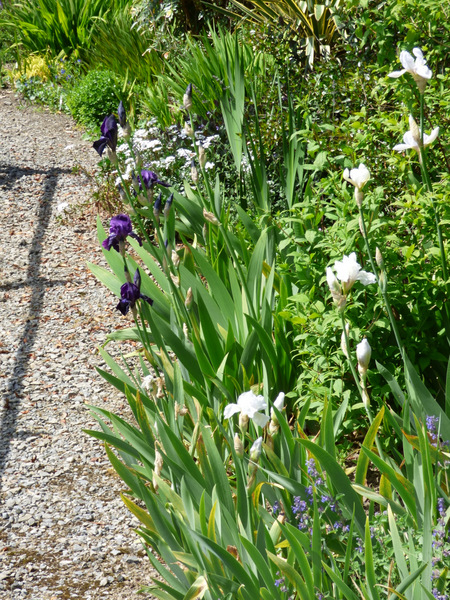
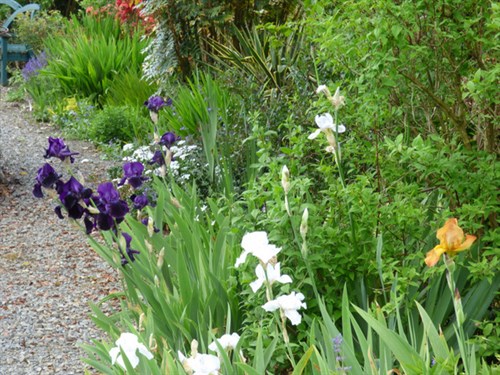
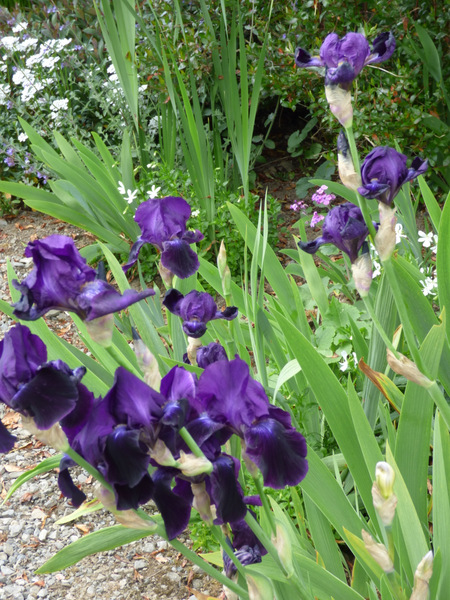
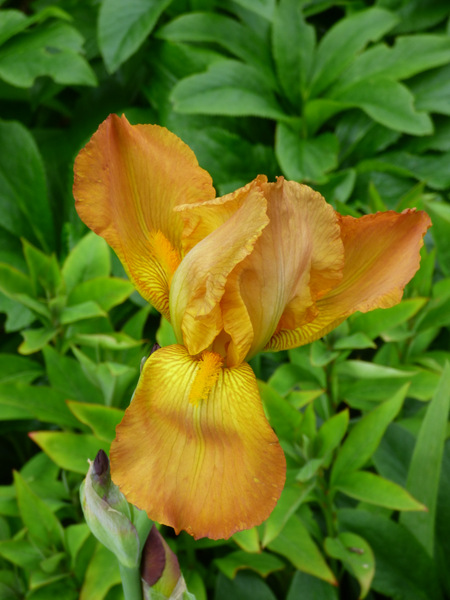
In the last week of the month the early summer
stalwarts got into their stride, lupins and delphiniums
especially.
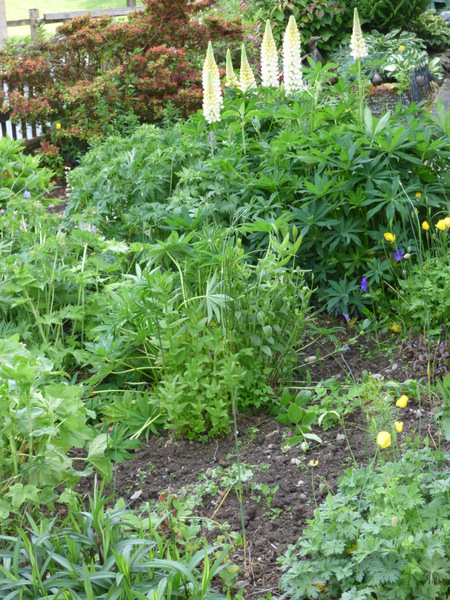
Oriental poppies in deep red are a welcome change
from all the white flowers elsewhere. "Beauty of Livermere" is a
good doer and has been in this border for over 10 years; a dear old
friend.

Seed grown anthirrinums from HPS seed sown a year ago.
It was described in the seed list as tall white form! Some whites
yes but exotic colours too.- part of the unexpected joy of growing
from seed.
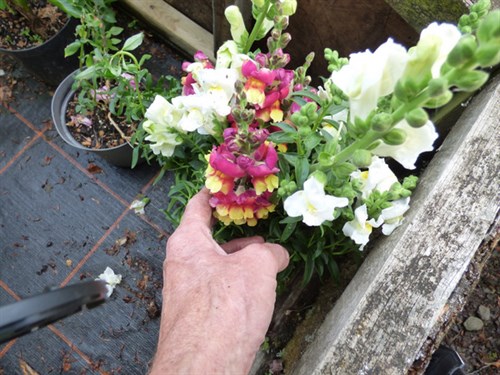
Back to a study in white again! Iris
sibirica "White Swirl" , Zantedeschia aethiopica and primula
Japonica "Postford White" growing in the shallow edge of the
Paddock Pond.
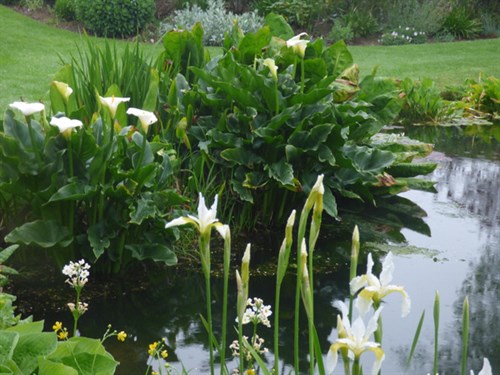
The rock garden outside the kitchen window,
augmented every year with new purchases from Border Alpines, always
a welcome nursery at Malvern Spring Festival
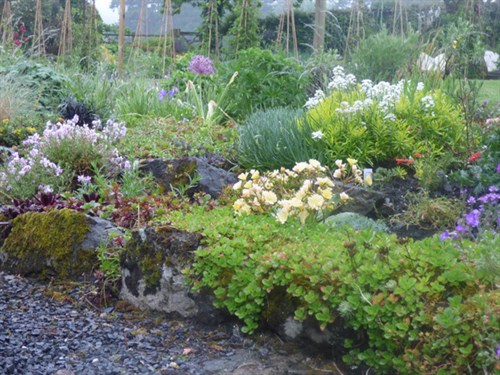
Euonymus angustifolius "Quicksilver" now in its
seventh year here and much admired for the wonderful foliage and
scented lemon yellow flowers in May
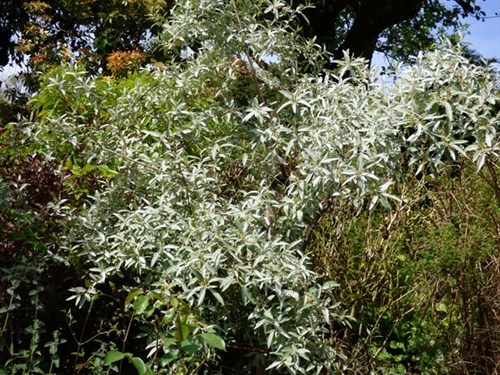
Choisia ternata, in flower from late March and untouched
by the frost

Cornus "Miss Satomi" is a good choice for a smaller
garden or limited space in a border as it is not as tall as the
trees and other shrubs in the genus but has wonderful deep pink
fowers on wide spreading branches

Good news is that some of the frost damaged aspersa
hydrangeas are now putting out new leaves and there appear to be
flowers forming in the leaf axils

Wildlife and countryside
As the new lambs begin to go off to market there are less sheep
in the fields as farmers attention turns to calving and the first
of the grass harvests with good weather to bring it in.

Bluebells have continued to put on quite a show which has been
extended by some weeks so that they are now flowering alongside
stitchwort making a very pleasing combination.
There seem to be more swallows this year but we have yet to see
any redstarts flycatchers or other summer visitors and
certainly no cuckoos that we rarely have here, a real song of early
summer that it would be great to hear again regularly.
In Hergest Croft Garden (see visits below) I was rather excited
when I caught a brief glimpse of what I first thought was a ring
ouzel, a fairly rare bird for those parts, and one I have never
seen before, other than in books. Sadly when downloading the pics
with the benefit of close ups I coud see that it didn't have a
perfect greyish white ring around the neck. Best guess it was a
blackbird with albino markings which is quite common.

Another bird I have not seen for may years was this
linnet on our trip to the Gower peninsular
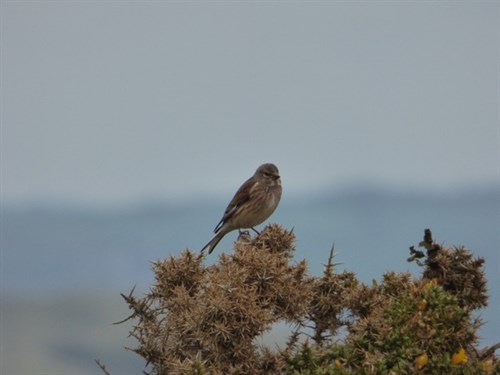
And this stonechat giving its identity away with
its "chit chat" call and bobbing up and down
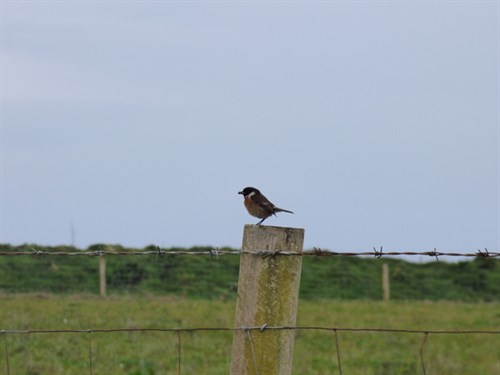
Having commented recently that I hadn't seen a
redstart this year I found this fledgling bird on the lawn one
morning. Perhaps pilferred from its nest and dropped as the
predator made off.

Ash die back, the disease chalara, is prevalent now the more so
the further west you go and is readily noticeable with the bare
boughs standing out from other deciduous trees now in full leaf.
Parts of England we have travelled to recently are showing signs of
it too which just a year or two ago was not so evident there

An article in a recent May edition of "Country
Life" set out some staggering facts concerning this rampant
disease: 150 million ash trees in Britain, and the cost of clearing
dead and dying trees is estimated to be £15 billion. Chalara is
expected to kill 95-99% of the150 millon ash trees. In the
Dutch Elm disease of the 1960's and 1970's almost 30 million elms
were lost. The ash trees will leave a huge gap in the
landscape.
Healthy hawthorns were everywhere thoughout the
month, these taking the place of the sloe trees along this lane
that I featured last month
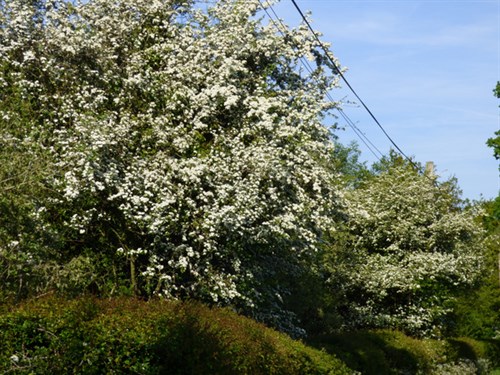
Visits
Late Spring is a great time for garden visiting, especially when
you are looking forward to a break from all the chores in the
garden that demand attention; they can drag you down if you let
them! So the odd day out re- charges the batteries and takes your
mind off all the things to be done at home.
A special favourite outing in early May is to RHS Malvern
Spring Festival which we have attended for 25years or so when a
show of that nature and scale was a real novelty. It has got
just bigger and bigger as the years have gone by and to see
everything there is to see you would need to attend all the 4 days
of the event! It has changed in other ways too in that we have a
feeling there are now less nurseries selling more individual
plants, with many stalls selling similar plants. This probably
reflects the costs and time to put on a stand at the show. I was
reading the other day that even the RHS itself is concerned about
this trend
It is still however a good day out in the most marvellous
setting, and a chance to stay with friends Sylvia and Tony
who live in the nearby Cotswolds. The pics below give you a flavour
of the scale and the range of the show.

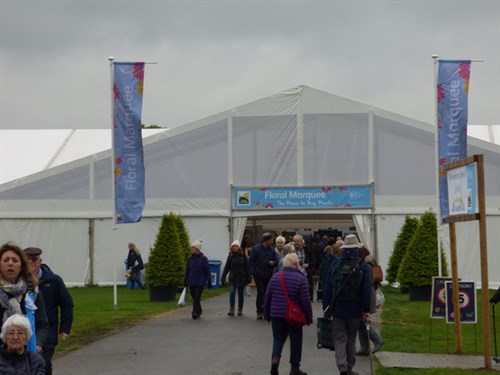
Inside the Floral Marquee which is always our
first port of call

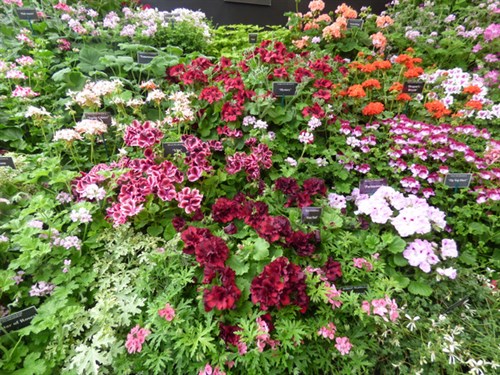



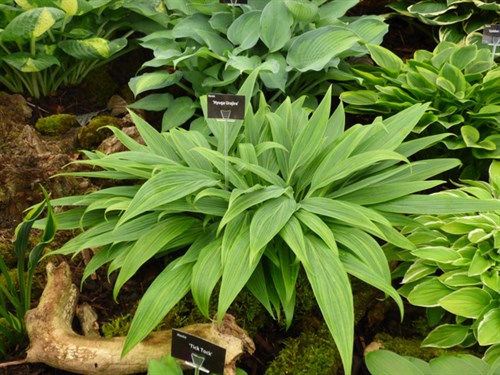
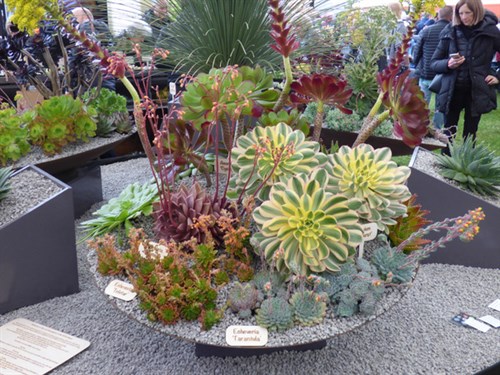
It was exciing to be some of the first public to see
this display from John Fielding, a long established plant breeder.
with many cultivars already to his name,featuring his latest
introduction, Ranunculus "Rococo" a cultivar of a mediterranean
buttercup shortly to be available to retail.
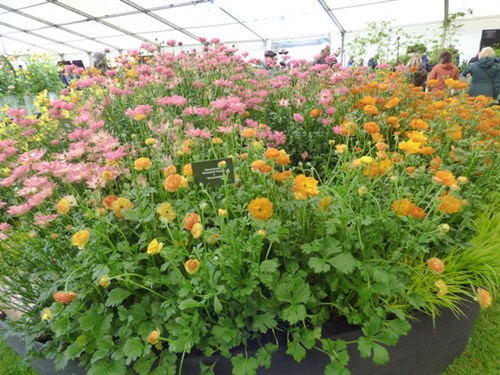
Slipper orchids, cypripedium, in an attractive
shade of lilac
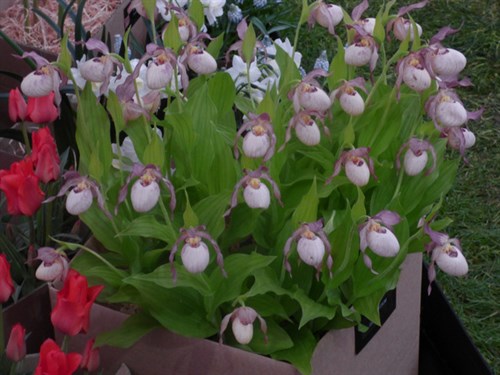
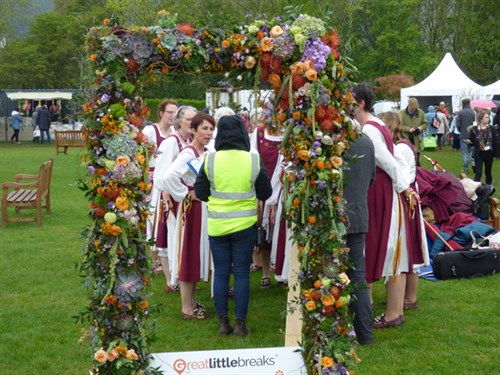
Entries in the children's garden competition which
were really quite professional.
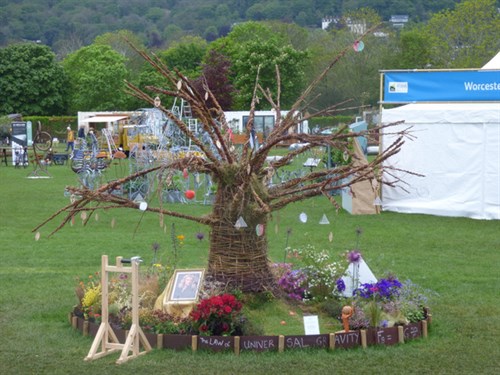
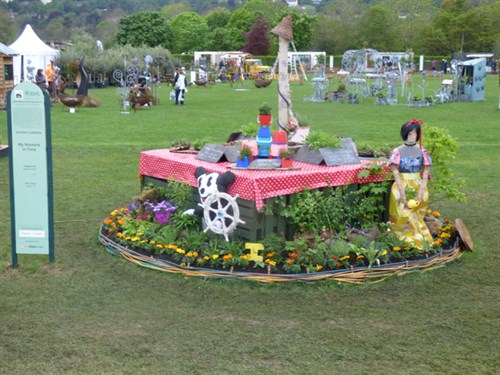

The former animal sheds at the showground have been
transformed to an elegant multi purpose space. Where the animals go
at the agricultutral shows I really don't know.
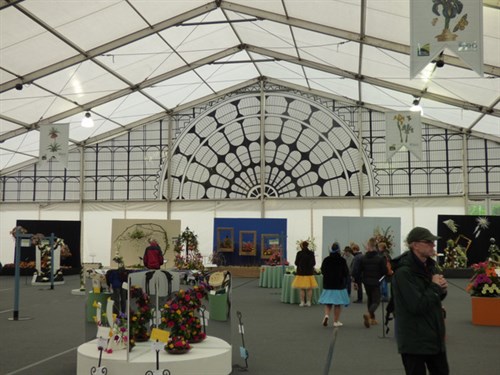
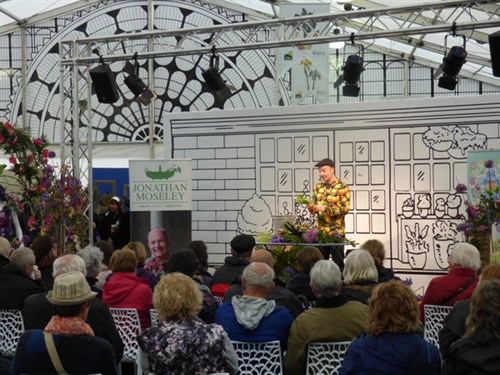
Other visits included Aberglasney Gardens just a few miles
down the road from us, and Hergest Croft Gardens, Kington
Herefordshire an hour and a half away, bothwell worth the
trip with so much to admire.
Aberglasney
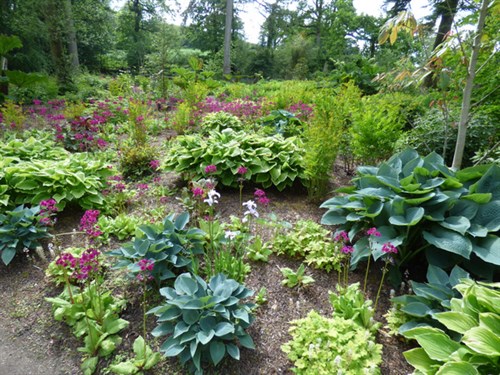
A plasing planting of alliums and anthriscus "Ravens
Wing" gave a very good planting idea, something I have already used
at Cilgwyn, but not on this scale, where the anthriscus grows
though pink roses
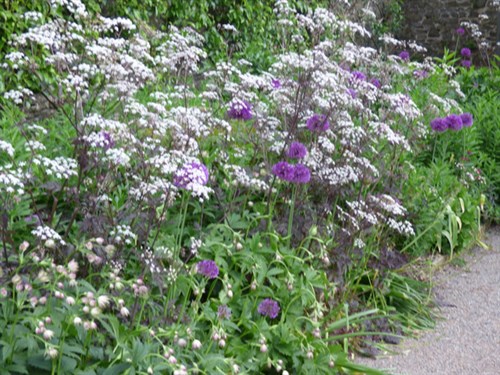
Large groupings of trilliums are everywhere in the
woodland gardens.

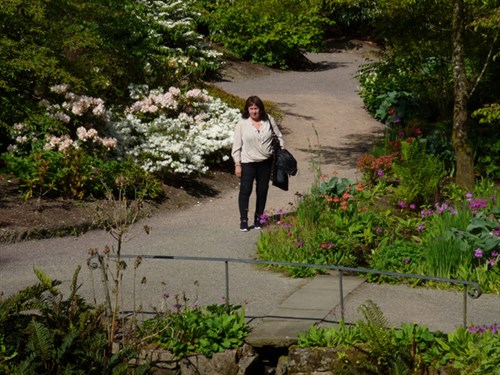
Paeonia Rockii - what a superb
specimen!!
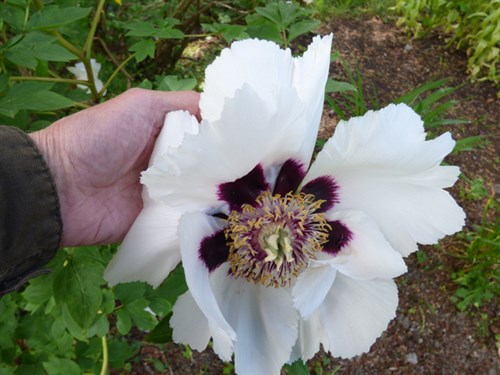
Hergest Croft

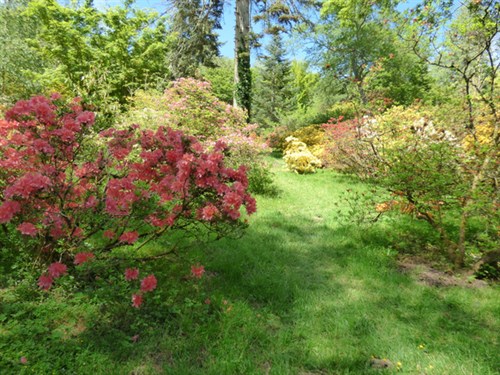
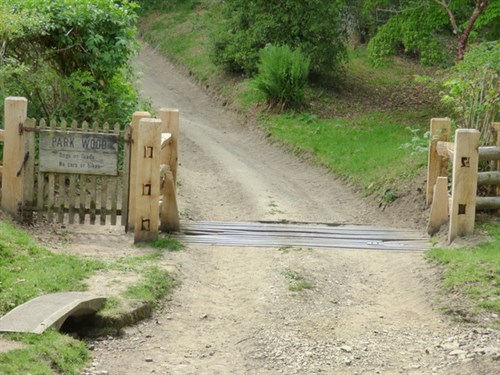

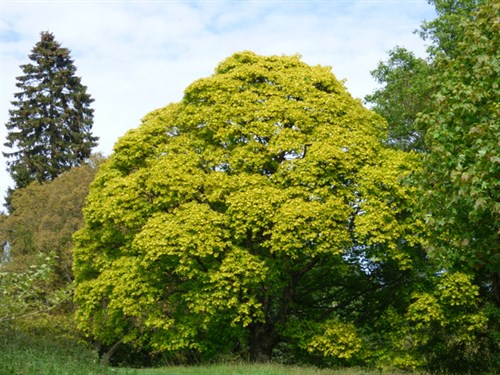
Gardening imitating nature with this lovely combination
of forget me nots and white bluebells. a juxtiposition of native
bluebells and stitchwort as illustrated earlier in this news
item

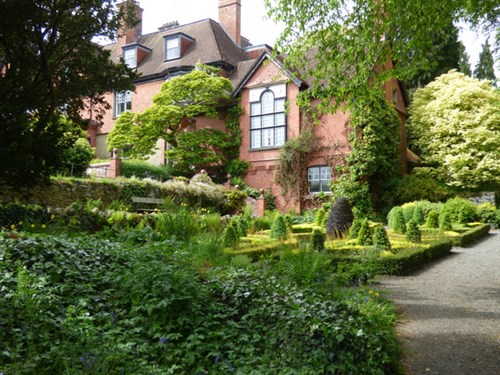
What a parting was this planting of the gorgeous species
tulipa sprengeri on the exit to the car park
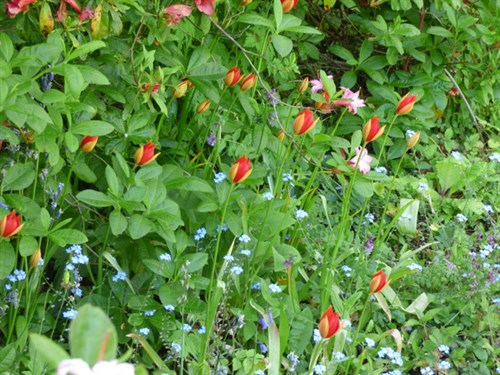
Broxwood Court
A plant Fair for a local cancer hospice, at a new venue,
Broxwood Court, Herefordshire was the first time we had visited
this property. Well attended with many of our favourite
nurseries in attendance. Interestingly the same plants were not
evident on all the other stalls!!
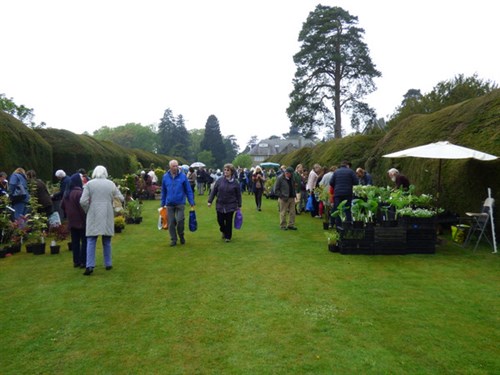



There are some choice trees all over the grounds
of the estate, at its best on th day we visited was davidia
involucrata, the paper handkerchief tree.

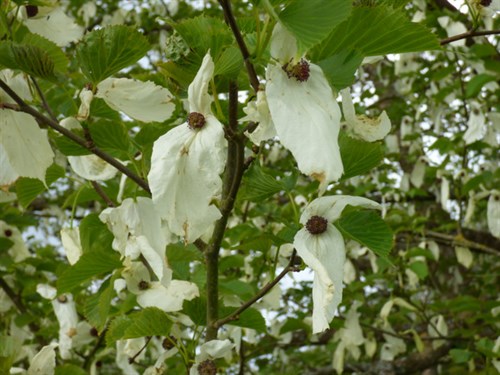
There are some amazing wood sculptures many
featuring owls, all done with a chainsaw by a father and son team.
For more about this tremendous skill and the people who create them
go to www.thomaschainsawcarvings.co.uk



Another splendid tree in its prime was cercis
siliquastrum, unique in the way that it presents it's flowers
straight from the branches without any stems. I remember many years
ago, being bowled over the first time I saw this tree in the
flesh.
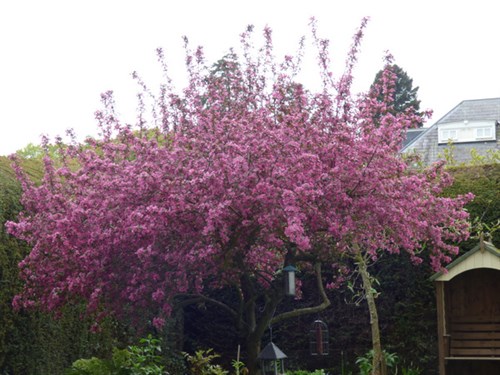
At the beginning of the month there was a trip to
the Gower peninsular to meet up with friends who live
there, Bob and Annette, and two other friends of ours
Julian and Fiona, for lunch, a garden tour and a cliff walk around
Rhossili Bay. Fabulous views all the way across the Atlantic ( well
not all the way of course!), the bird life and native flora, very
different from what we have back home.

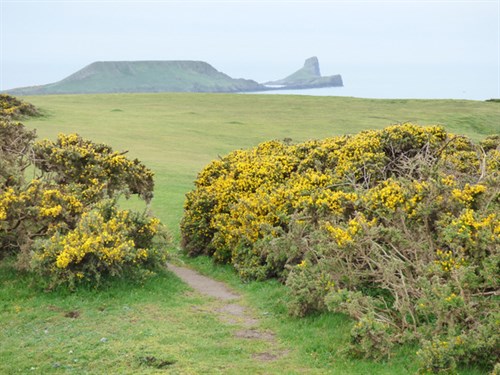


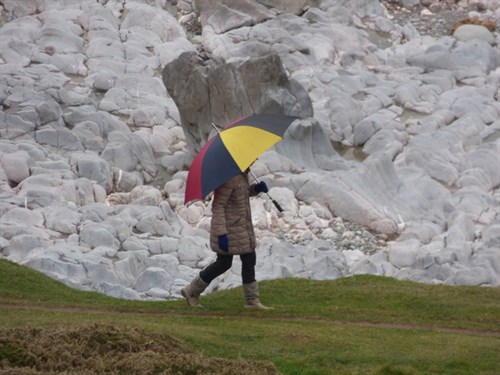


Thanks for staying with this marathon edition
No space for any more news!! even though there was another visit
that I will save for next month with some great pics.
Happy Gardening
Keith and Moira